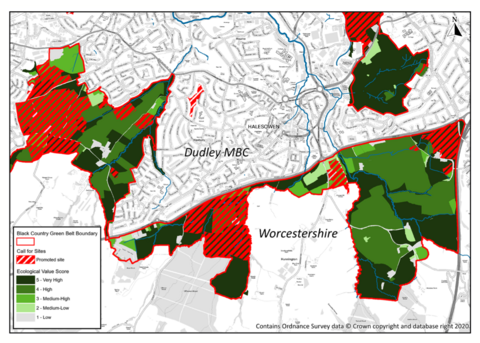In the next 20 years the urban area of the Black Country is due to expand at a rate not seen since the middle of the 20th century. Studies commissioned by the Black Country local planning authorities have concluded that in the period up to 2038 new land must be found for up to 71,459 homes, whilst an area of 870 hectares will also be required for employment land. Due to be adopted in 2023, the Black Country Plan will allocate the land needed to meet these targets.
What is the Black Country Plan?
The Black Country Plan is being jointly produced by the four Black Country councils (Dudley, Sandwell, Walsall and Wolverhampton) and will allocate land for housing and employment up to 2038. 2038 is so large that it cannot be found in the existing urban area, and that these exceptional circumstances have now been met.
As part of the process a ‘call for sites’ exercise opened in July 2017 and closed in June 2019. The councils requested submissions from anyone who wanted their sites to be considered for development as part of the Black Country Plan.
Details of all the sites that have been put forward for consideration.
An Ecological Evaluation of the Black Country Green Belt
The Wildlife Trust and EcoRecord (the Environmental Records Centre for Birmingham and the Black Country) were commissioned by the Black Country local authorities to undertake an Ecological Evaluation of the Black Country Green Belt. This comprehensive study analysed a wide range of datasets and assigned a relative ecological value from 1 (low) to 5 (very high) to individual parcels of land (landscape units). Datasets used in the analysis included land use, habitat features, existing nature conservation designations and position in the landscape.
A review of the Green Belt is also underway as part of the Black Country Plan process. All parts of the Green Belt, as well as that in surrounding rural areas such as South Staffordshire, is being considered for new development.


